There’s big … and then there’s really big … and then there’s mind-blowingly gargantuan big! A visit to Sequoia and Kings Canyon National Parks gives you a chance to get up-close-and-personal with some of the biggest trees on Earth.
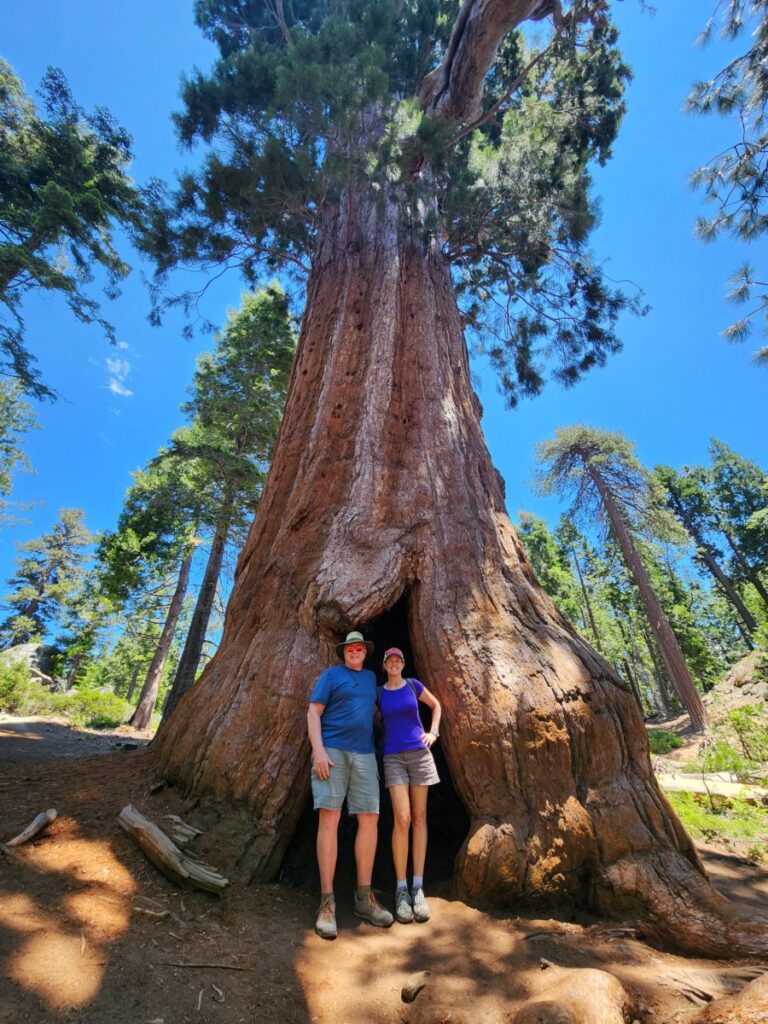
Sequoia and Kings Canyon, adjacent and interwoven with each other, are managed as one by the National Park Service, and were our 68th and 69th NPS sites. The classic signs are usually simply the name of the park and the NPS shield, but the Sequoia NP sign was vintage! Welcoming visitors since 1935, the carving is supposed to represent Sequoyah, a Cherokee scholar who invented an alphabet for his language. Unfortunately, it looks nothing like him or his people … it is instead based on the Native American profile from the old buffalo nickels, a stereotype at best.
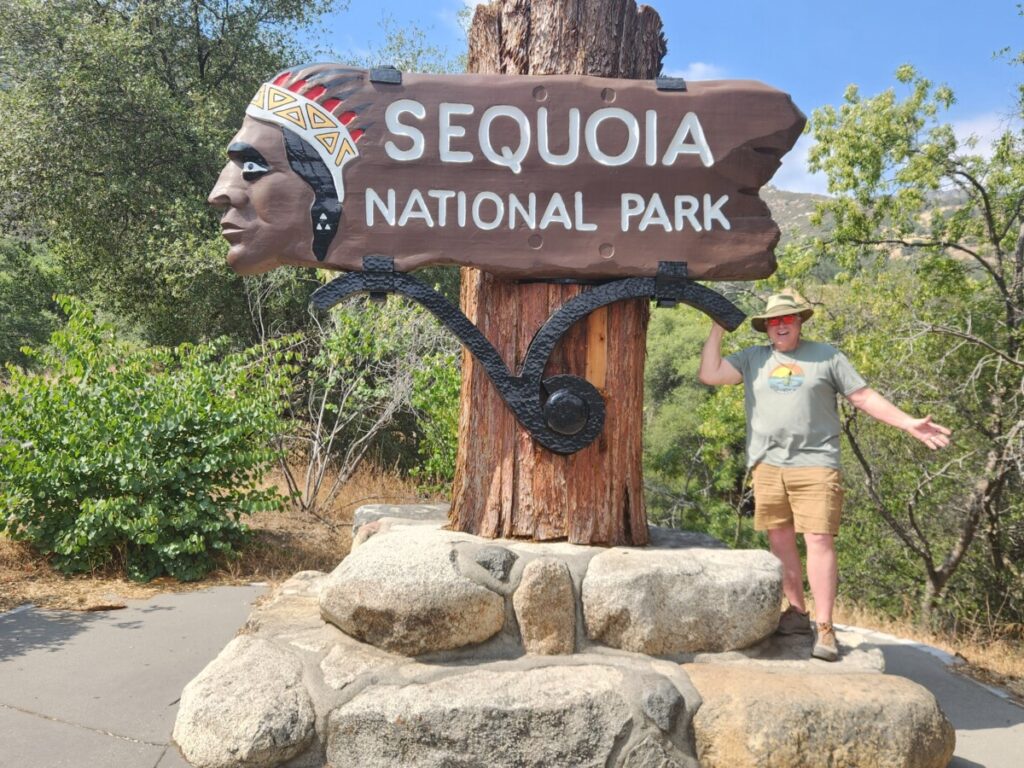
Meanwhile, the Kings Canyon NP sign was surely the smallest in existence. Usually these are so large that you can climb up on top of them!
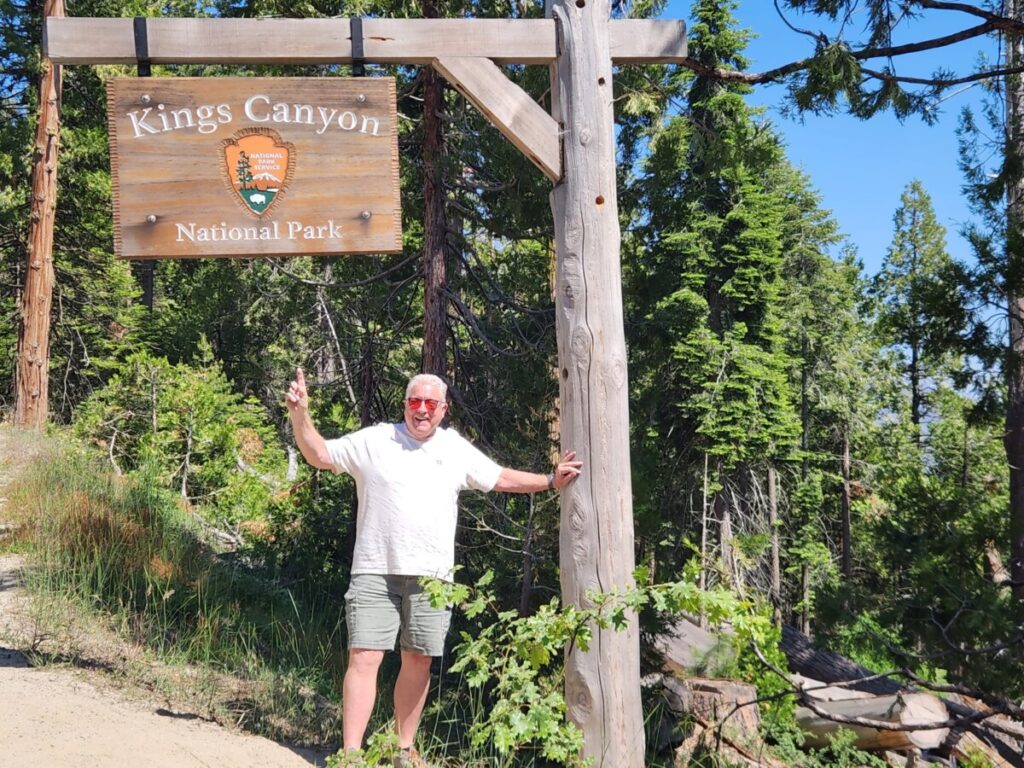
The two banner trees in the parks are named after American Generals, General Sherman and General Grant. Grant, the world’s second largest tree, was named “America’s Christmas Tree” in 1926 by President Coolidge, despite not resembling a Christmas tree even a little. That’s a 40-foot diameter around the bottom, people! It would take about 20 people holding hands just to make a complete circle around the base. And how ’bout this: if you filled up its trunk, it could hold more than 37 million ping-pong balls! (Who figures these things out anyway?)
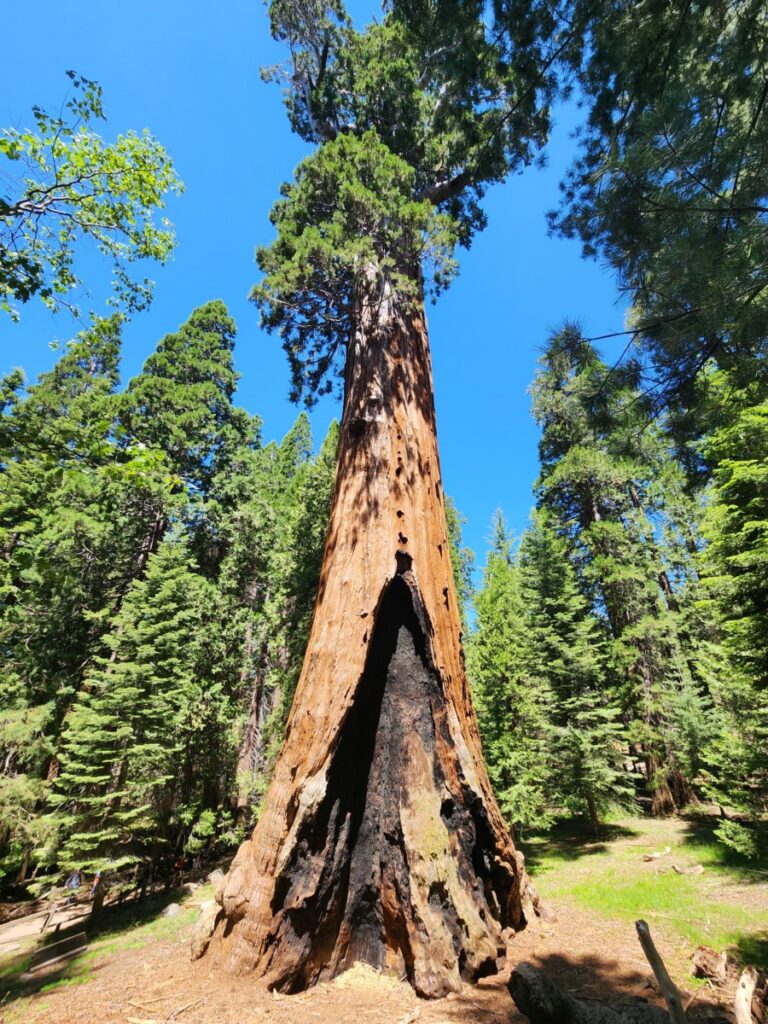
Just kinda looks like any ole tree in the forest, eh? Not so fast! These sequoias are big — I mean it! It’s hard to demonstrate without something else for scale, so I will lean on history to make a point. The Boole Tree is another notable sequoia, growing in the forest just outside the parks. The first picture shows the bottom of it … yah, ok, big tree, yadda yadda. But when you pair the same view with a picture from the late 1800’s, you get the idea!
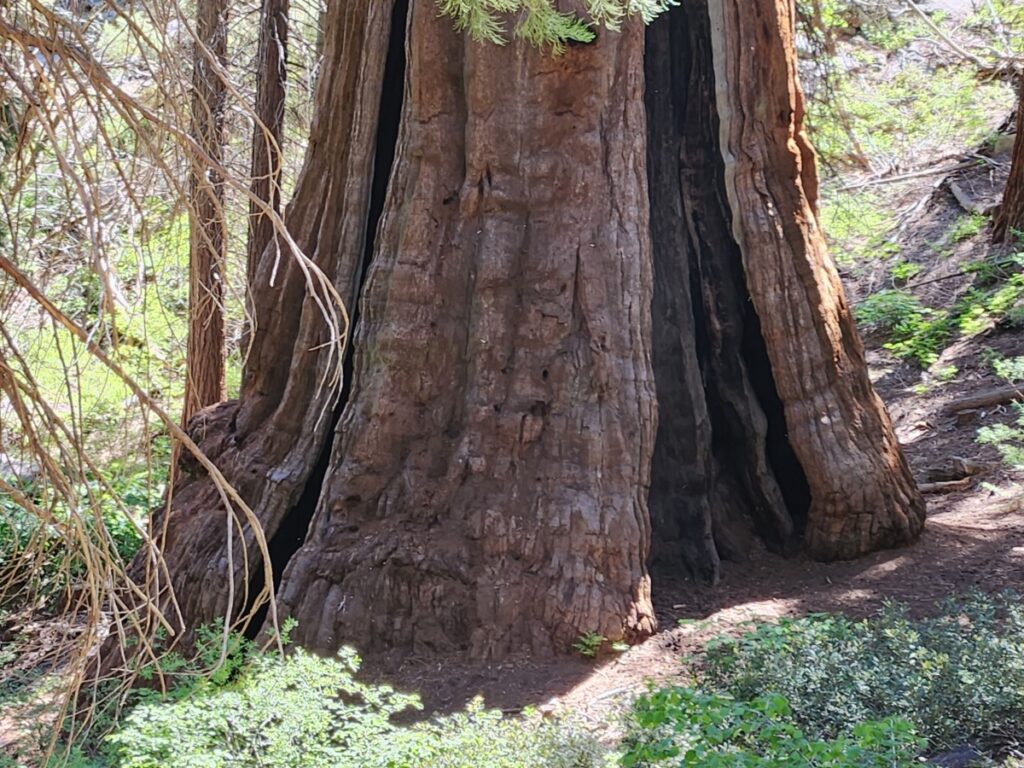
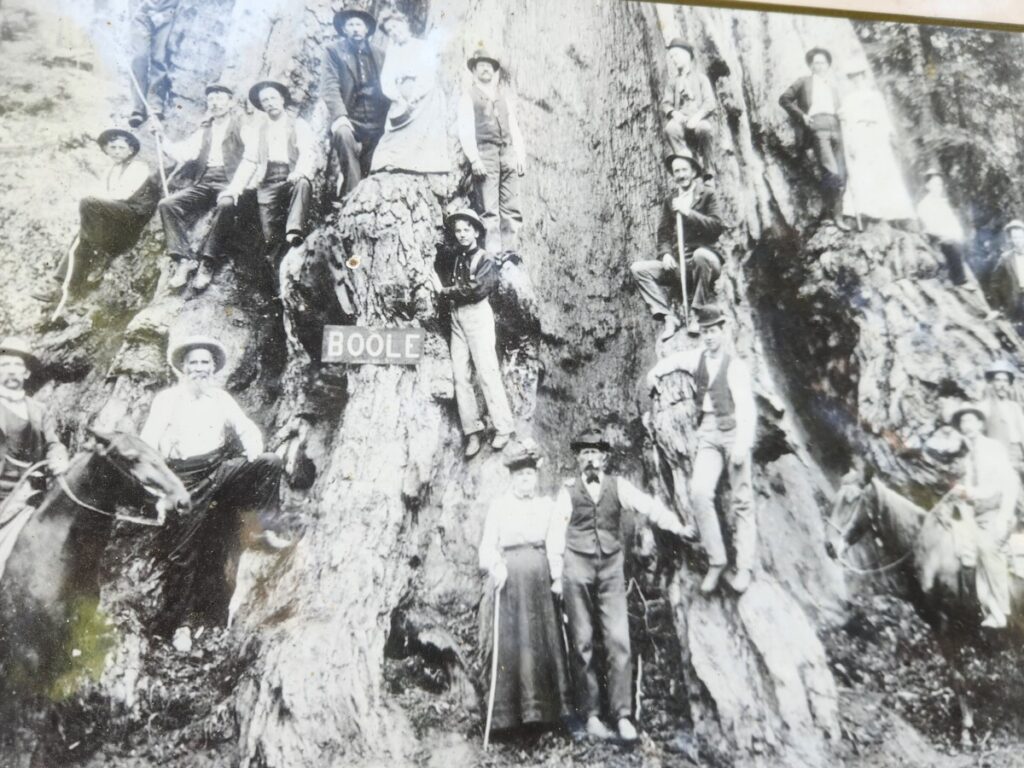
All this “big” talk had us wondering: are sequoias truly bigger than the mighty redwoods? Indeed, the giant sequoia and its fatty trunk is the largest tree in the whole, wide world when measured by volume (the actual formula is V = (πh/2)(r12 + r22), which means nothing to me or anyone I know, but looks really scientific and impressive). The redwood, however, is the world’s tallest tree with its slender trunk. So now we know.
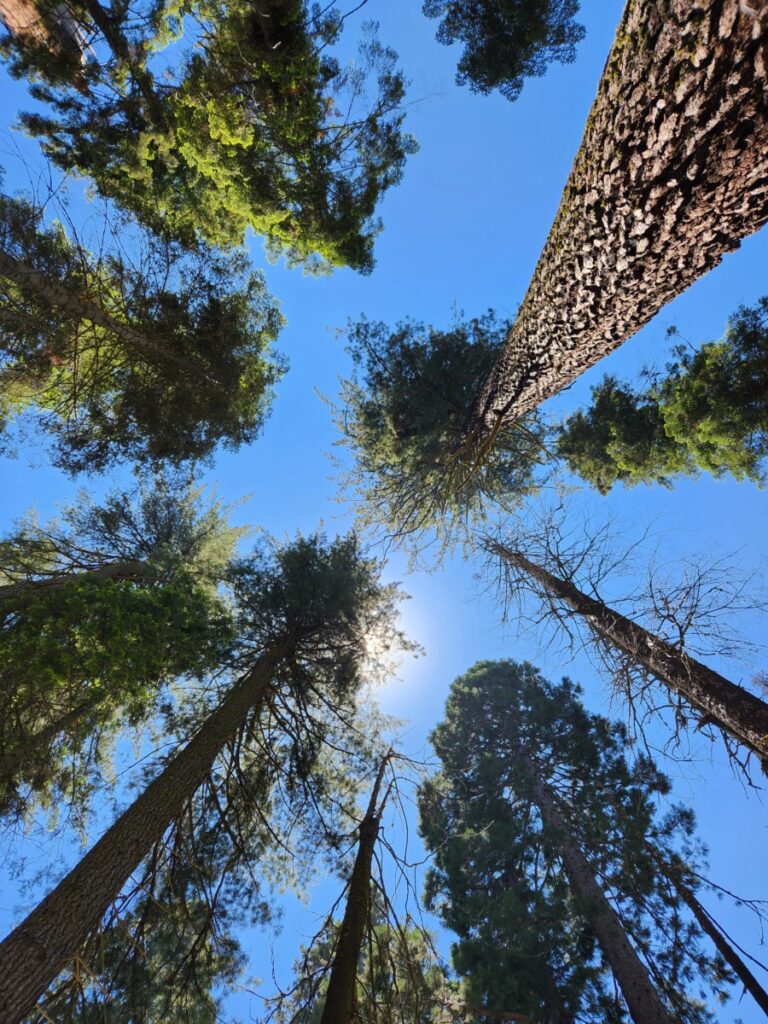
Sequoias grow straight up first, tall and skinny, like my junior high boyfriend. Then, as the years pass, they get fatter around the middle (also probably applicable to my junior high boyfriend, now that I think about it). If they are close to each other, it can look like multiple trees are growing out of the same stump.

Speaking of stumps, our favorite hiking trail was appropriately called The Stump Trail. Set in an area of extensive commercial felling of trees in the 1800’s, this 2.5-mile loop trail lets you get up close and personal with the remains of that sad time, which thankfully is in the past due to modern conservation-minded thinking.
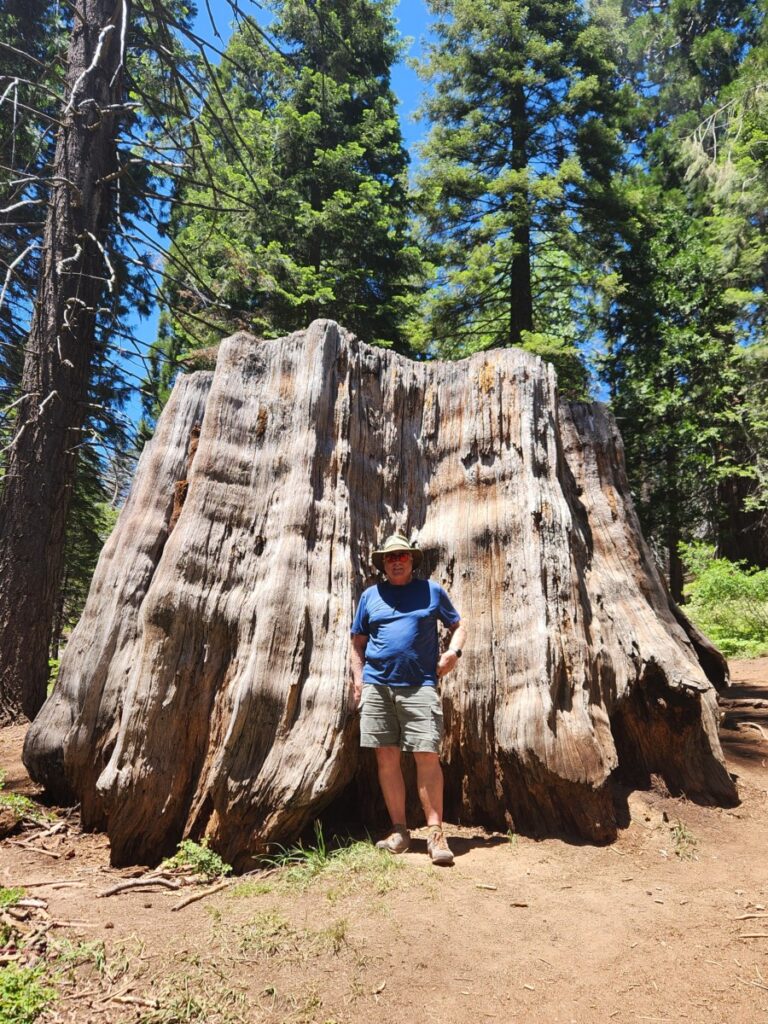
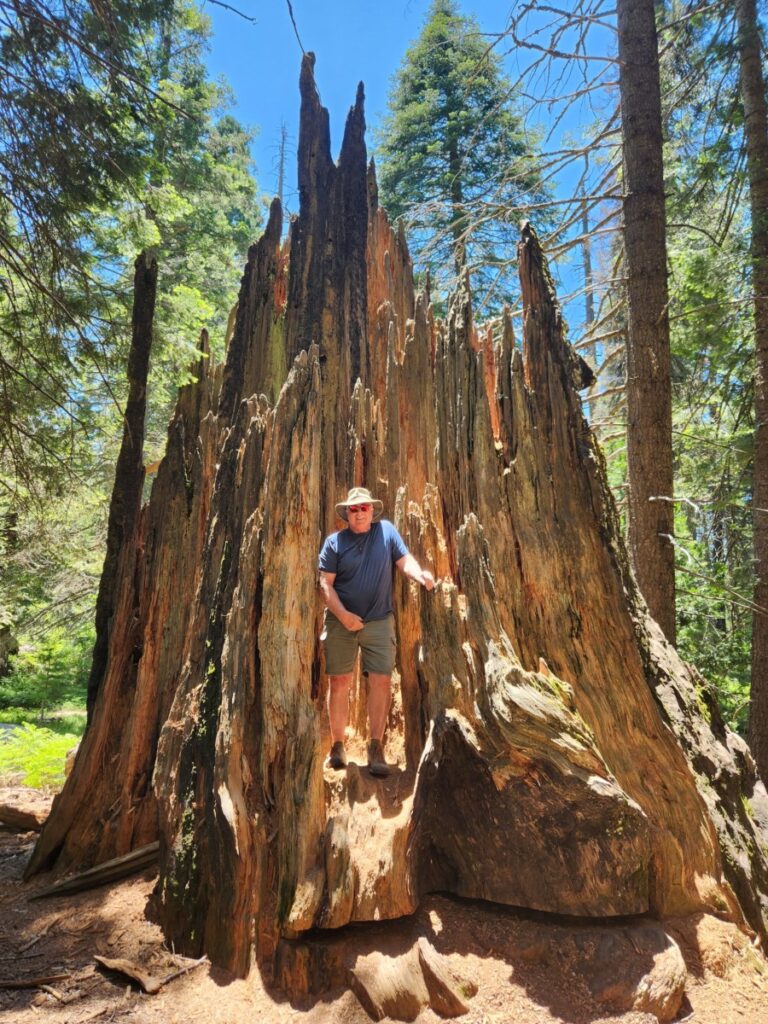
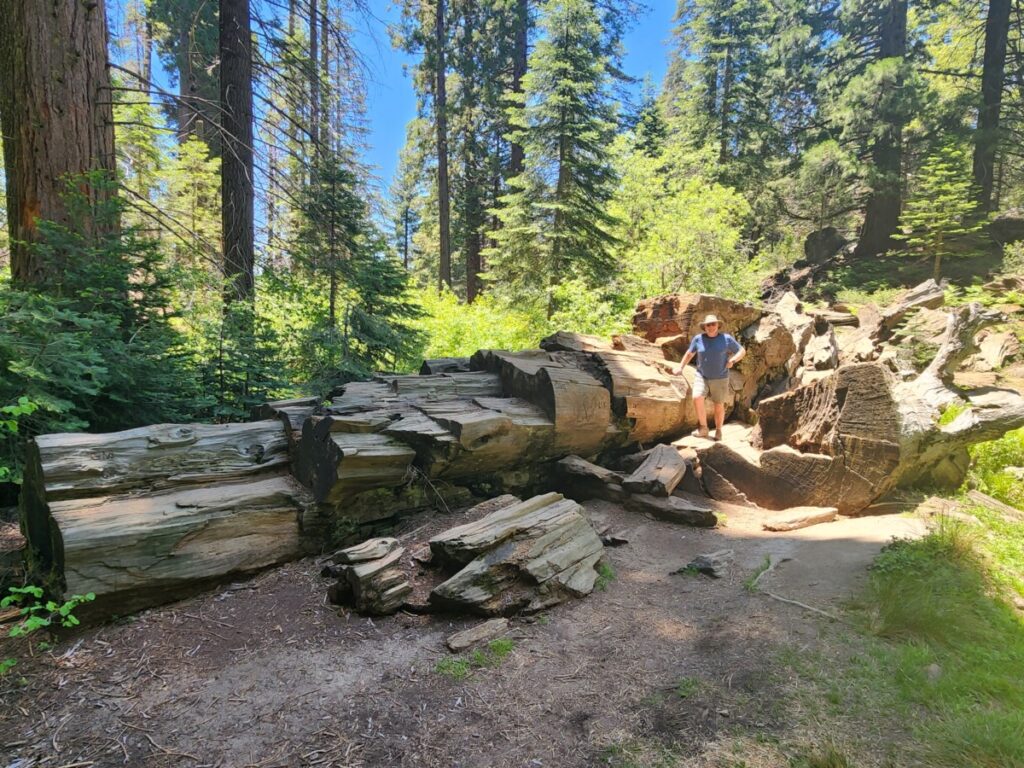
One of the stumps is so big and interesting so as to have a name: The Mark Twain Stump. I don’t think he visited here, but it was named in his honor. Kinda like those honorary doctorates that colleges give to celebrities, but I digress. A ladder allows you to climb it and reallllly see how big these trees were … the top doesn’t even all fit in the photo.
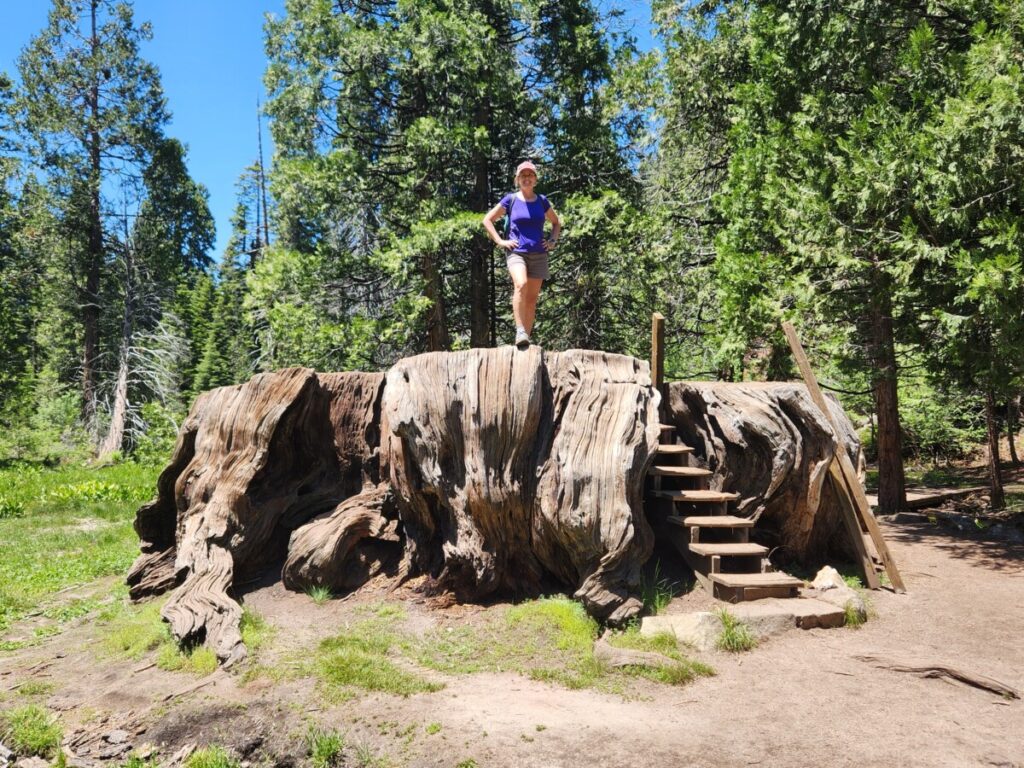

This place is nearly vertical, with elevations as low as 1,370′ and as high as 14,494′. In fact, the tallest mountain in the contiguous 48 states, Mt. Whitney, is located in Sequoia NP. From scrubby foothills to snowy mountain peaks, its got it all, assuming you’re willing to venture into lands that are 95% untamed wilderness.
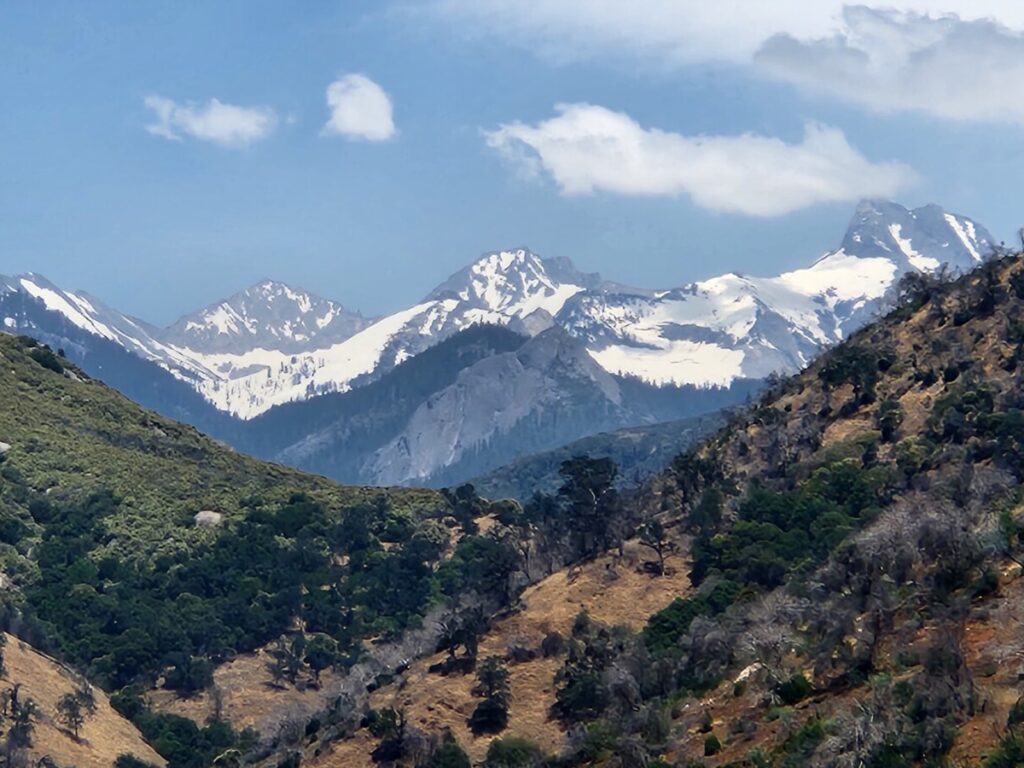
Our visit was made challenging by closures caused by a big 2021 forest fire, and then followed by huge storms this last winter, with flooding waters racing down the fire-scarred mountains and washing out key roads. The main road through both parks, the 32-mile long Generals Highway sporting 130 curves and 12 switchbacks, had a huge chunk in the middle of it that was closed from both ends. Doh!!
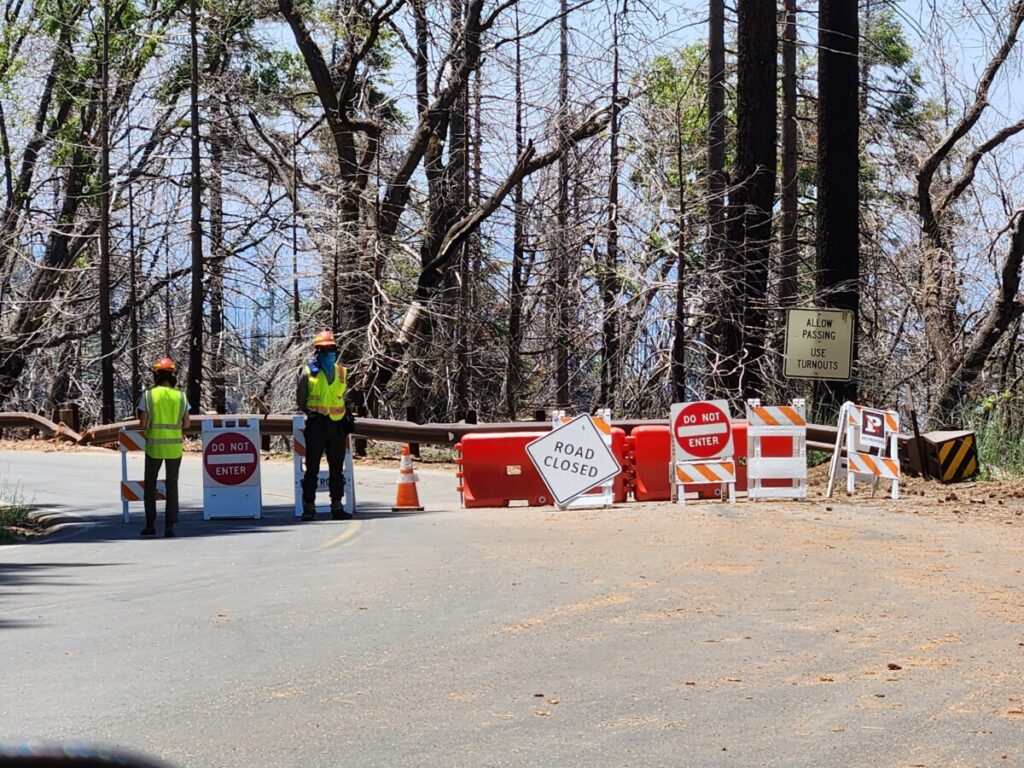
It made for long days of navigation to key points in the park, but our little yellow Jeep made for the perfect tour-mobile with the top down. It can be challenging to remember to keep looking up – up – up! Look how small the Jeep is, in relation to just one of the “average” trees in the parks.
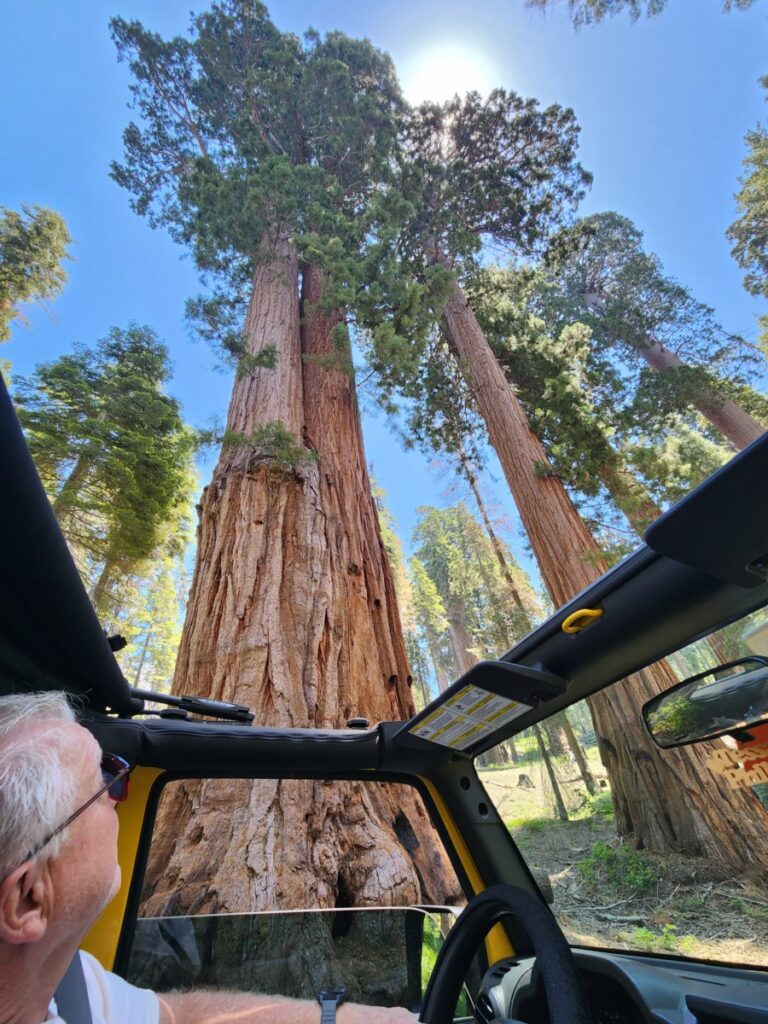
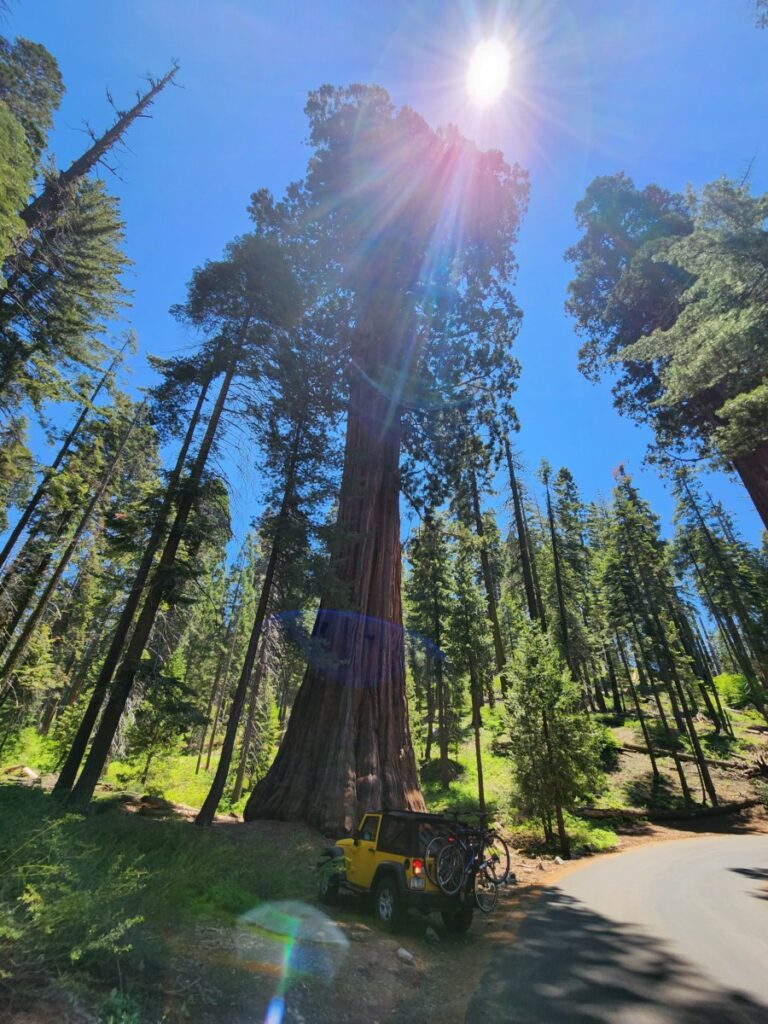
There are lots of waterfalls and rivers, including the namesake Kings River and the rushing Kaweah River, welcome relief for a hairy golden retriever on a hot summer’s day.
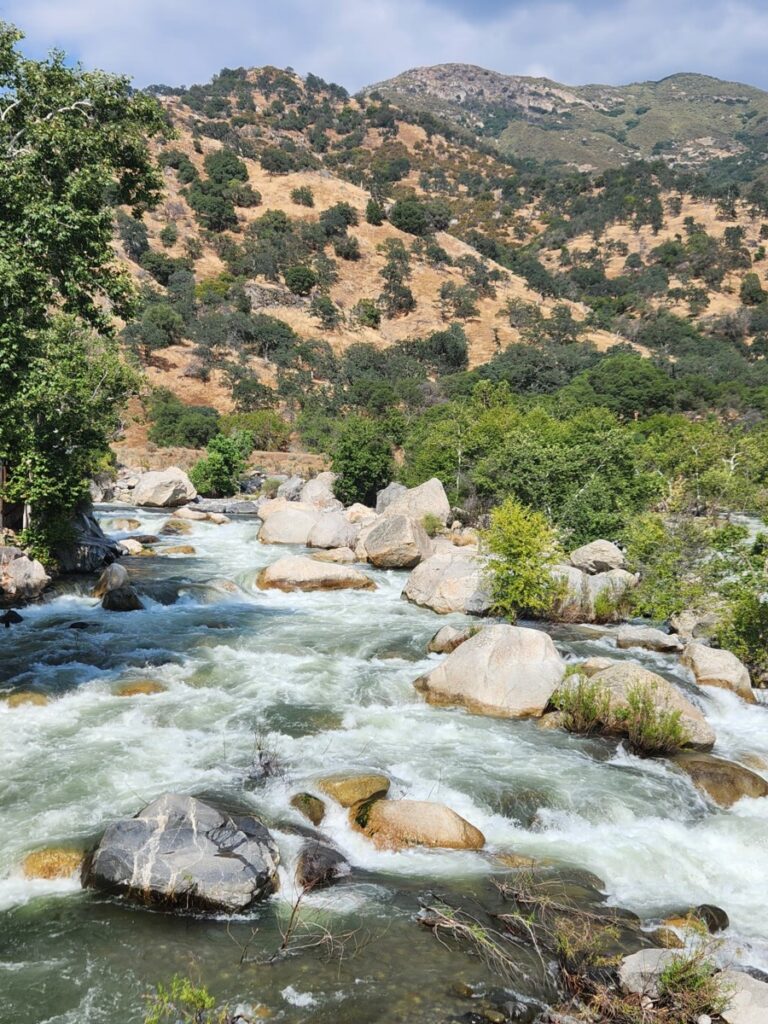
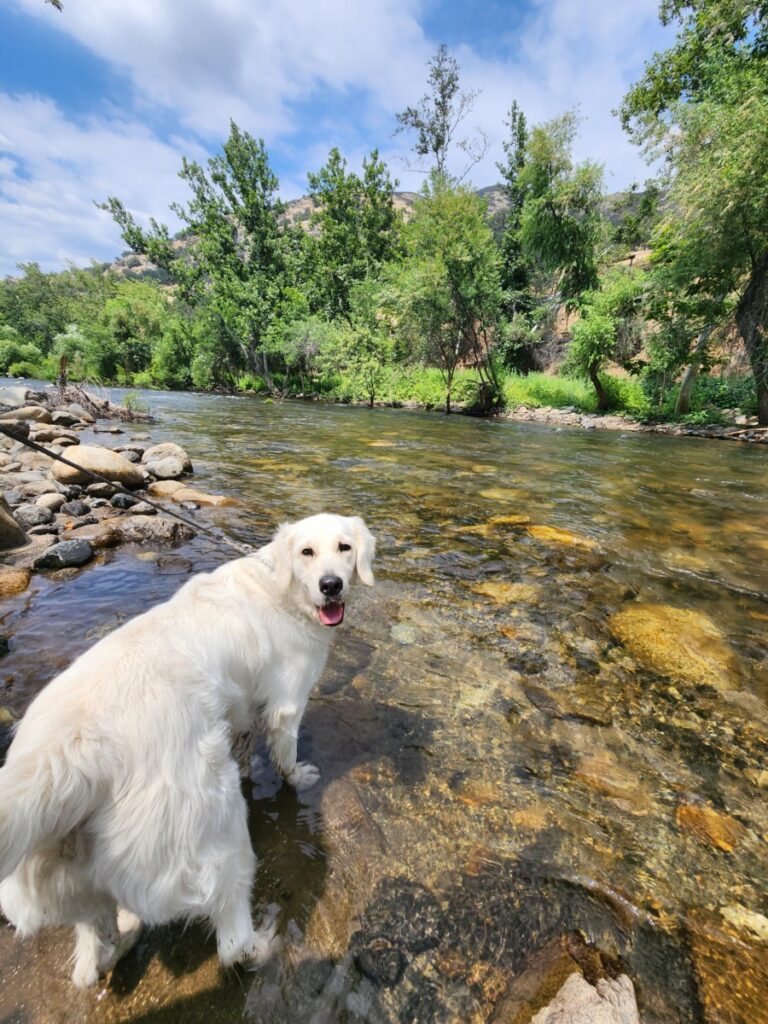
Many of the hillsides are blackened and the crews of forest workers engaged in “fuel reduction” (removing debris that could easily burn in future fires) entertained all of our newbie, stupid-civilian questions with amusement and resign.
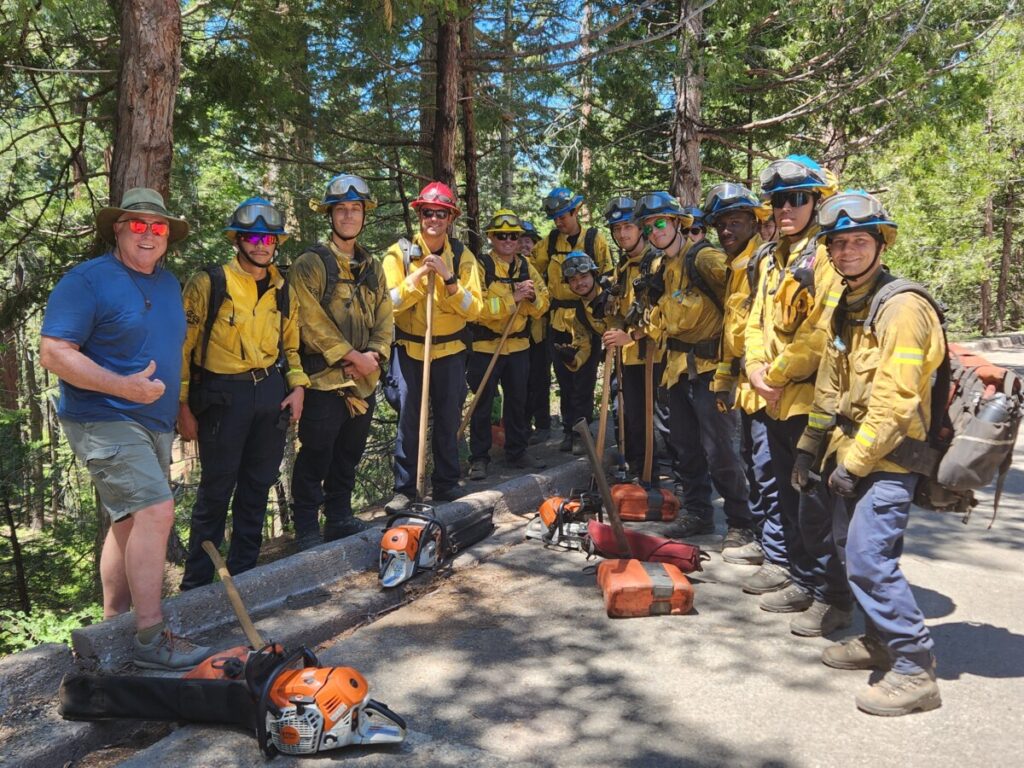
A lot of time is spent here going “through” things. If a tree falls (in 1937, by the way), HEY! – just cut a tunnel through it. Old sequoia tree stump? Perfect tunnel or hidey-house! If a rock falls, no problem, that becomes a tunnel too … or climb on top, if you’re daring like Philip!
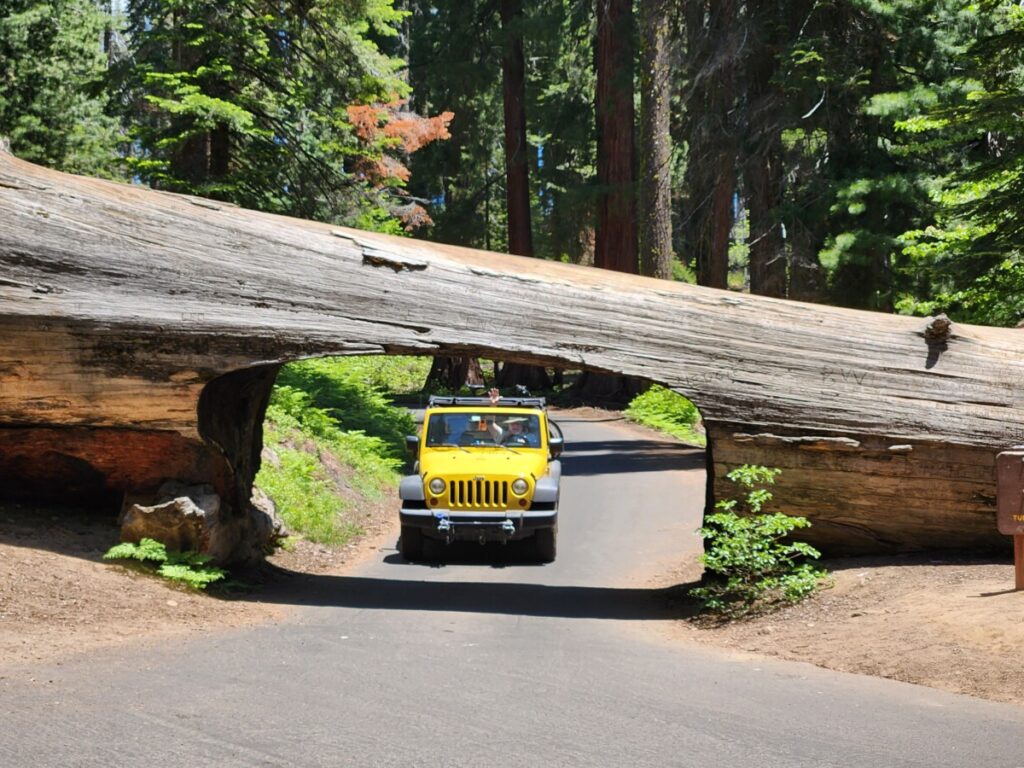
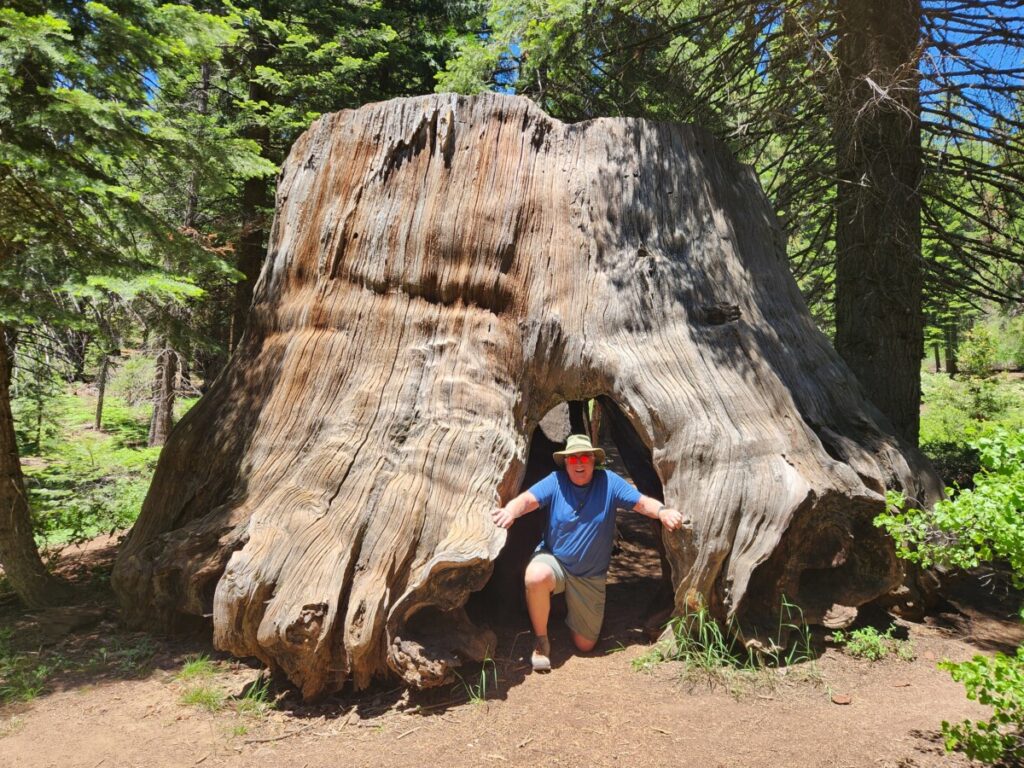
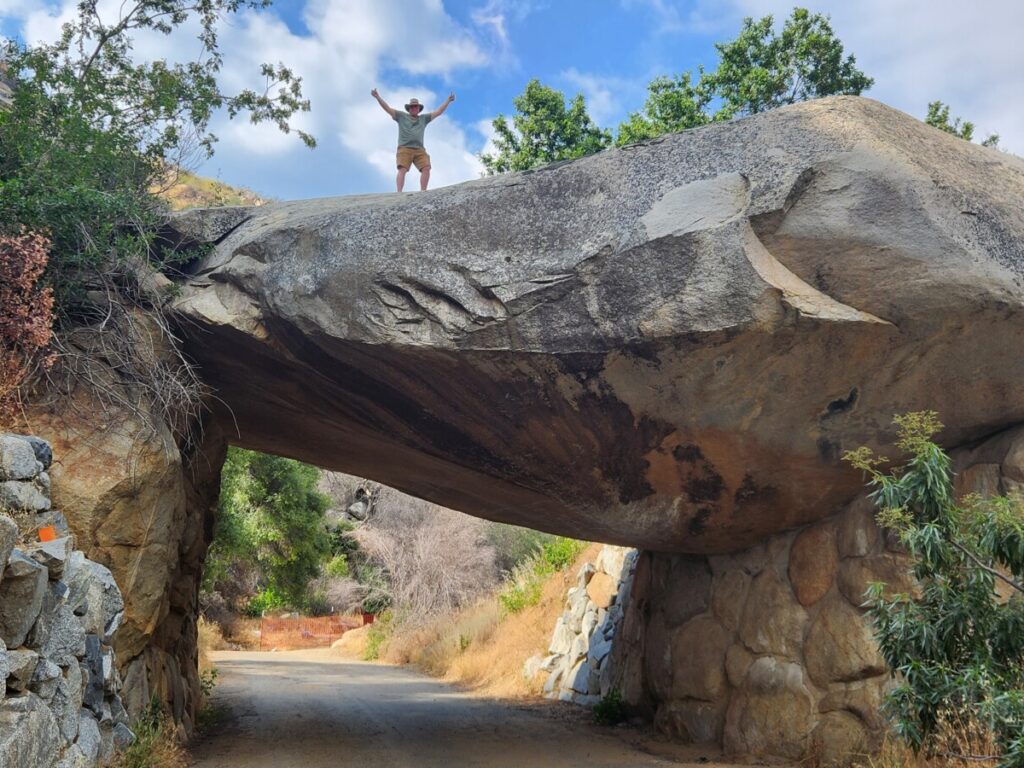
If a tree falls in the forest and nobody is there to hear it, does it make a sound? Yes. A big sound. It also unearths some really big roots!
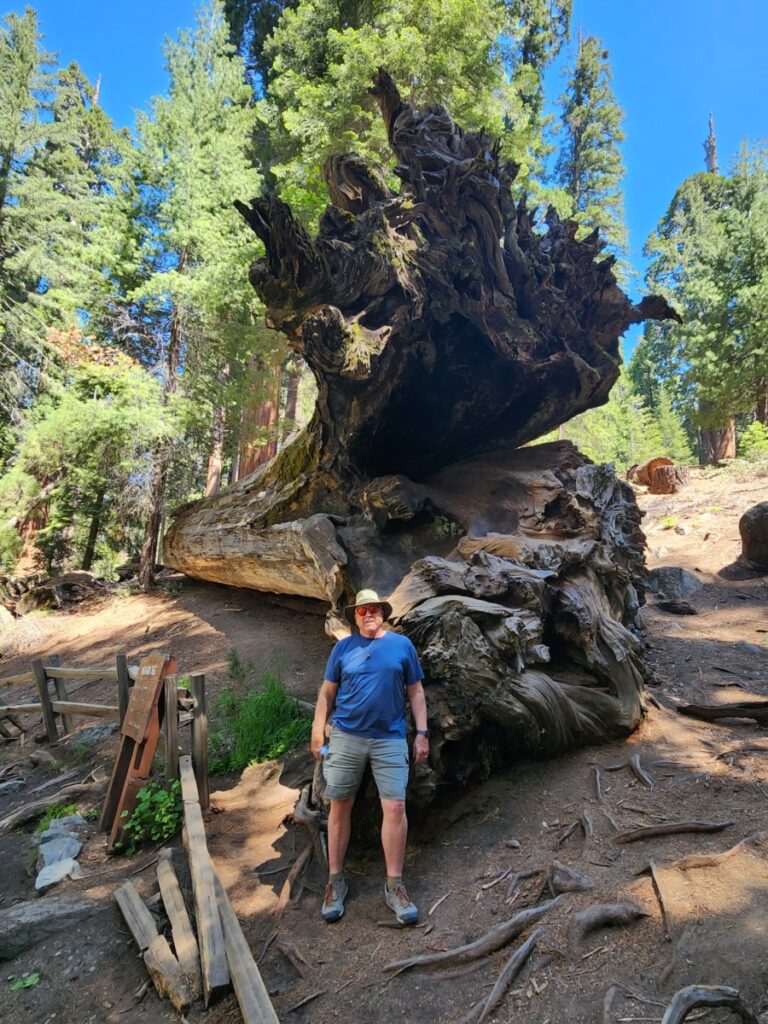
Trees aren’t the only things around here that come big … REALLY BIG!

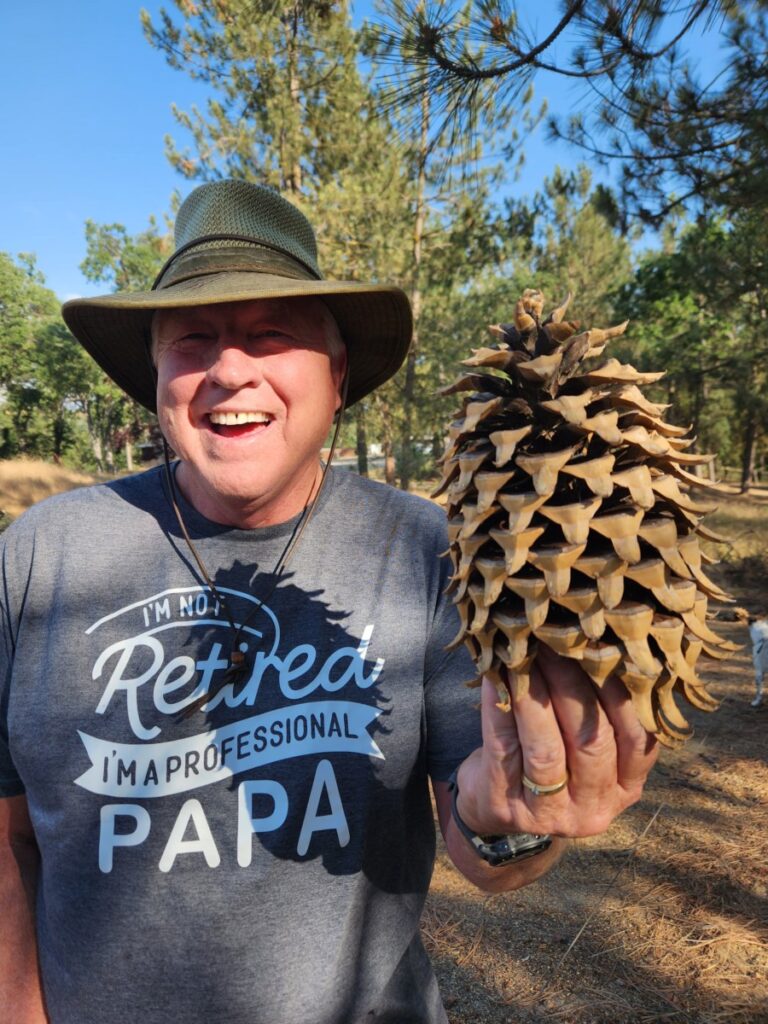
The bugs were swarming …. but not what you’d think! No, not mosquitos, or flies, or chiggers, or no-see-ums. Believe it or not, these are all LADYBUGS! One of them flew into Philip’s mouth and he accidentally swallowed it; I told him if you swallow a ladybug, you probably fart a rainbow.
After seeing a peaceful, gorgeous picture of Hume Lake somewhere, I wanted to head there. In another shocking case of Instagram-vs.-reality, we arrived to find an enormous Christian camp perched on it’s edges, with tens of thousands of people going every which way; the lake stuffed with bumper boats, I mean kayakers; and the echoing sound of cheers as lake-water baptisms were performed. Eeeeek, not so peaceful after all! Get me outta here!

Another thrilling-albeit-slightly-terrifying activity was a hike up 360 steps while ascending 300 feet altitude up this granite dome, all the way to the top of Moro Rock, offering spectacular views and a heart-pumping accomplishment.
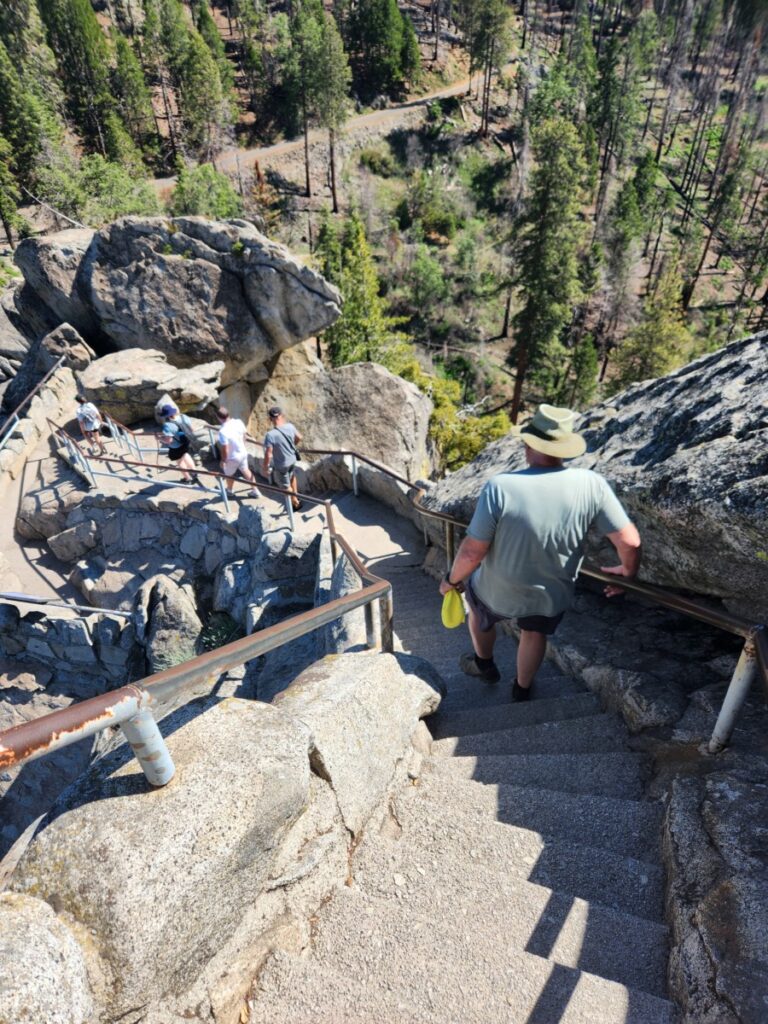
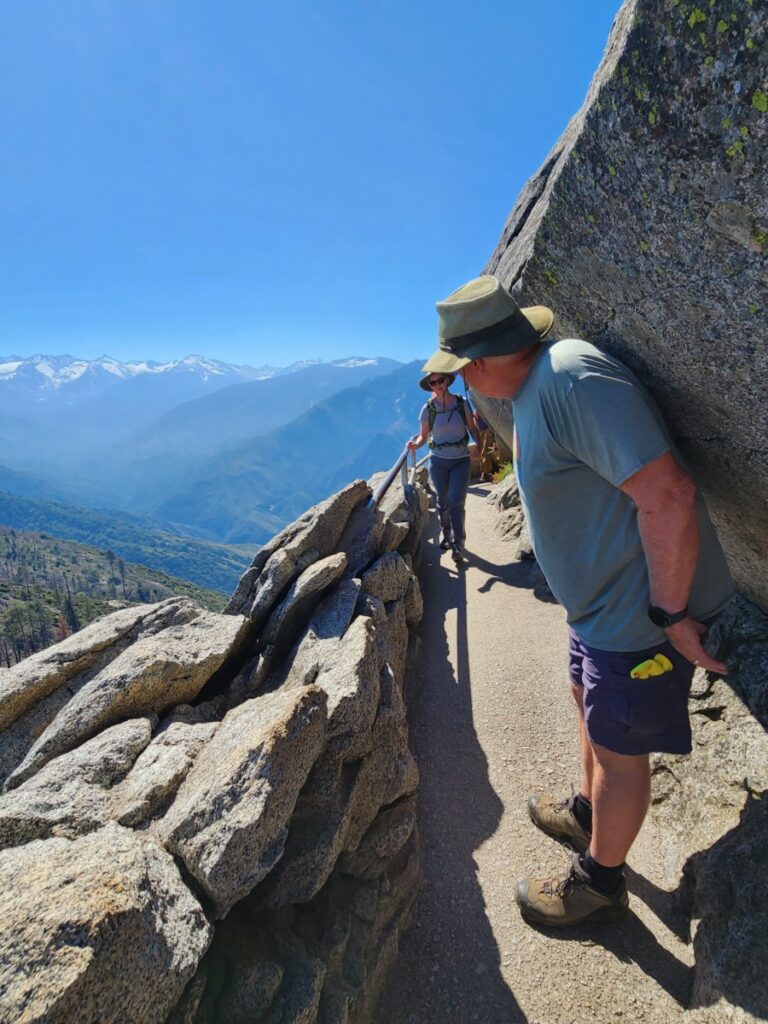
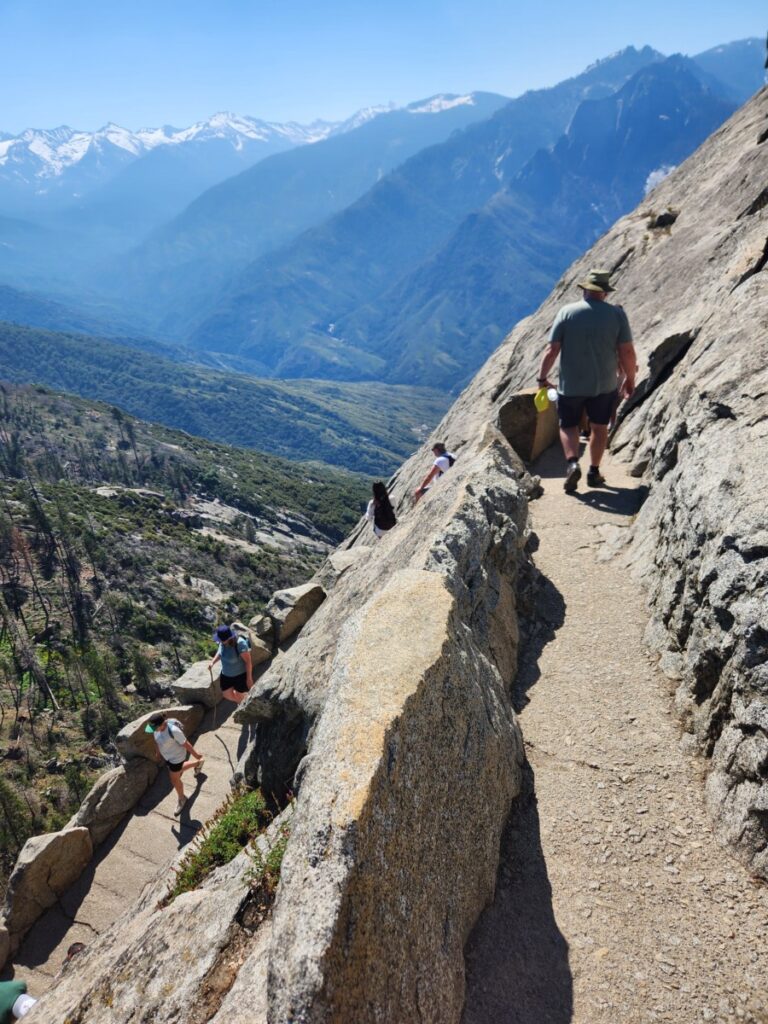
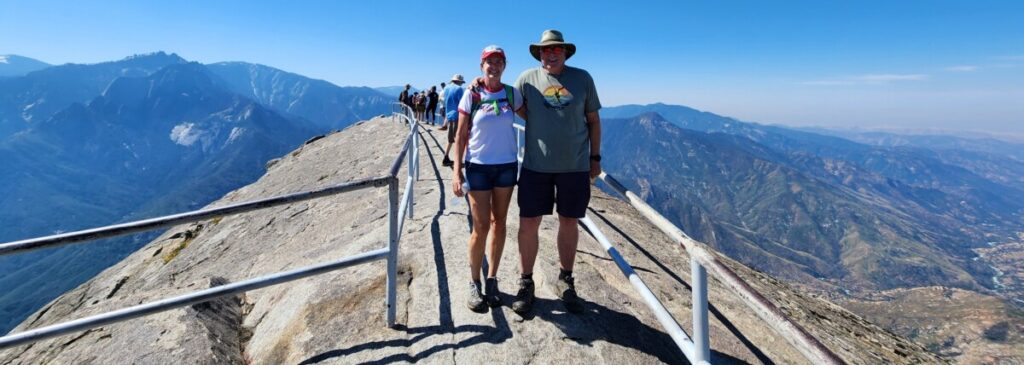
Outside the park, we saw one of the smallest still-operating post offices in the USA, and the last tangible remains of an 1800’s commune of sorts. The Kaweah Cooperative Colony was a utopian project started in 1886, but like all utopian projects, it would seem, “internal difficulties” (you can only imagine what) caused the Colony to cease operation after 1892. Or, perhaps they were simply sick of junk mail and bills. At only 12′ x 15′, the Kaweah Post Office is still run by volunteers.

In tragic news back at the campground, our RV bathroom door handle broke … with Philip trapped inside the privy. It took 30 minutes of my McGuyver’ing, breaking bits and pieces off the lock, to rescue him. So, now we have a new self-closing door mechanism. Behold! Ain’t we classy?
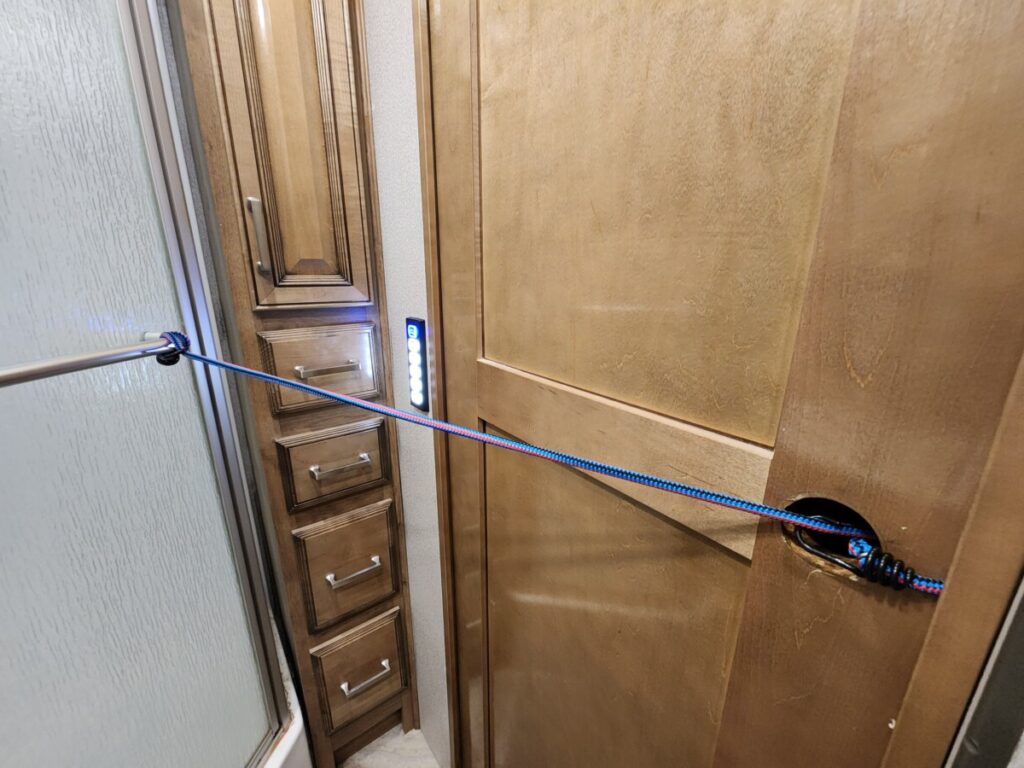
And thus, we say goodbye to this *tree-mendous* area and it’s awe-inspiring beauty. We’re next heading to Pinnacles National Park, with a stop along the way in Fresno to see a unique subterranean garden — you won’t believe the story of it! See you down the road!
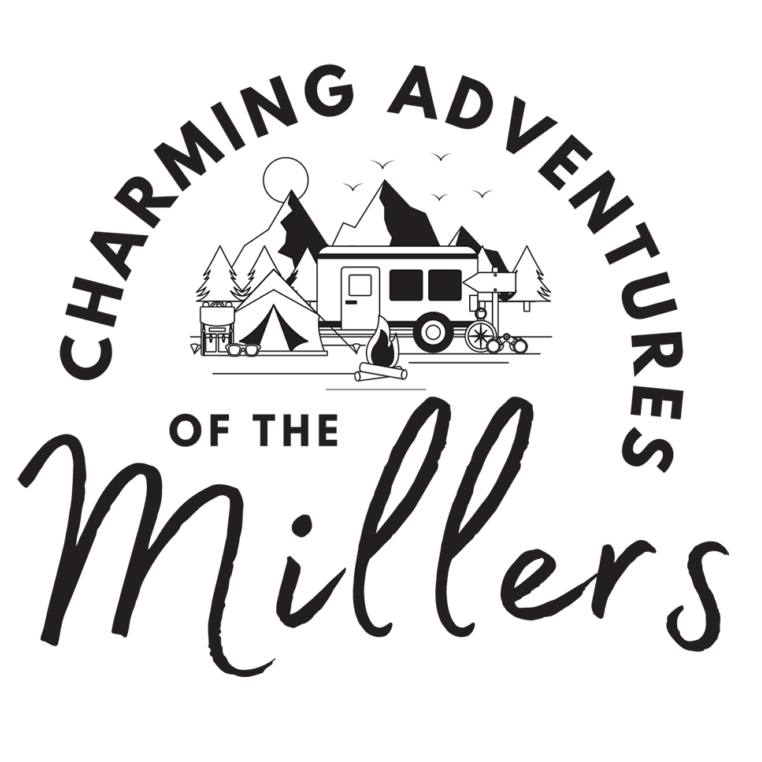
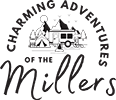
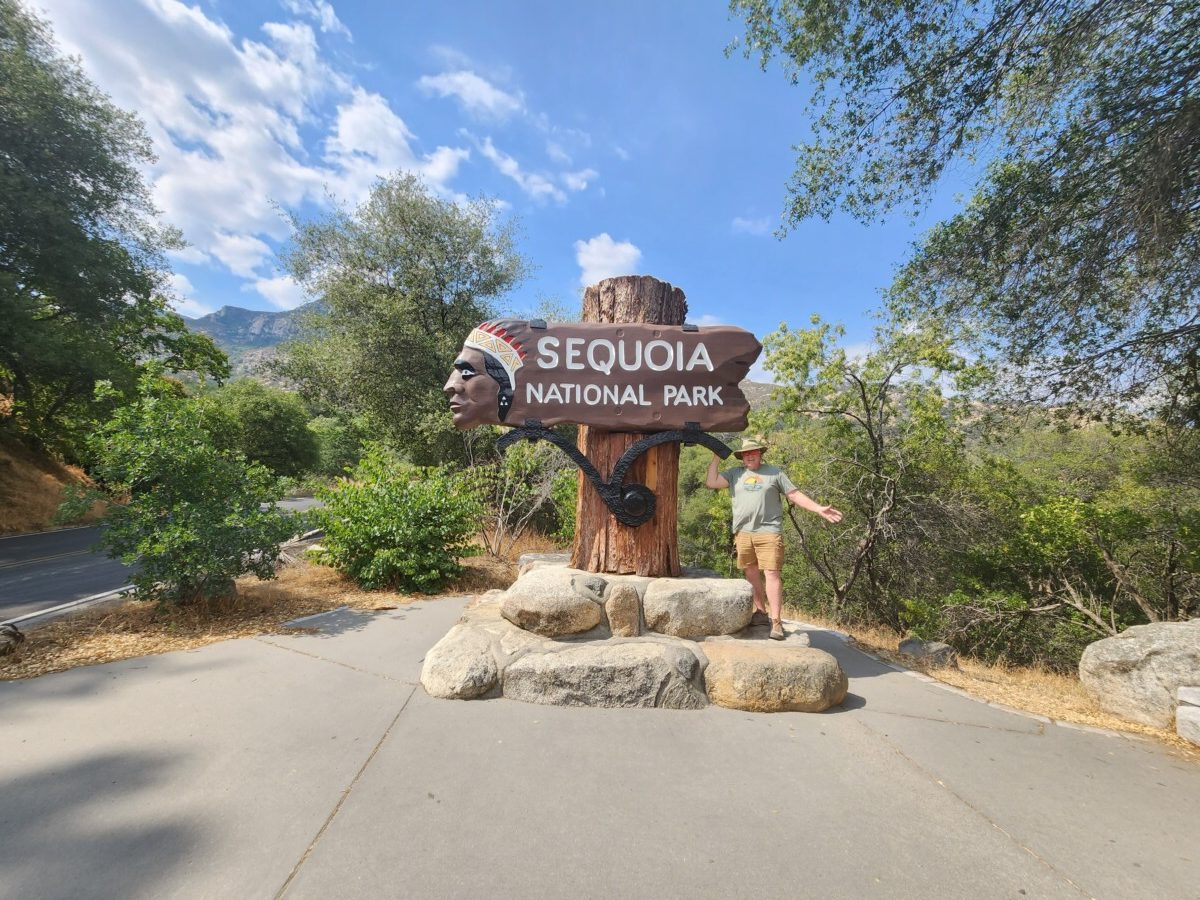
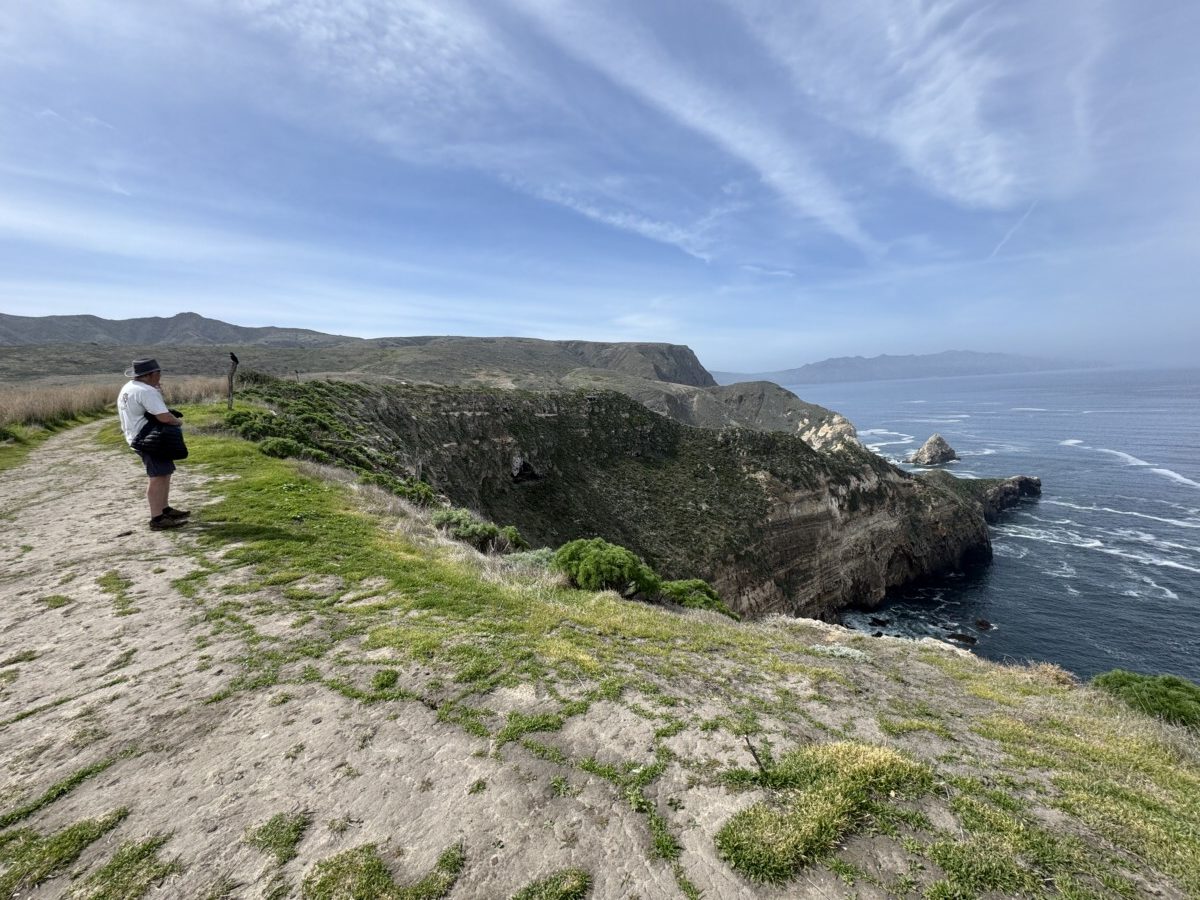
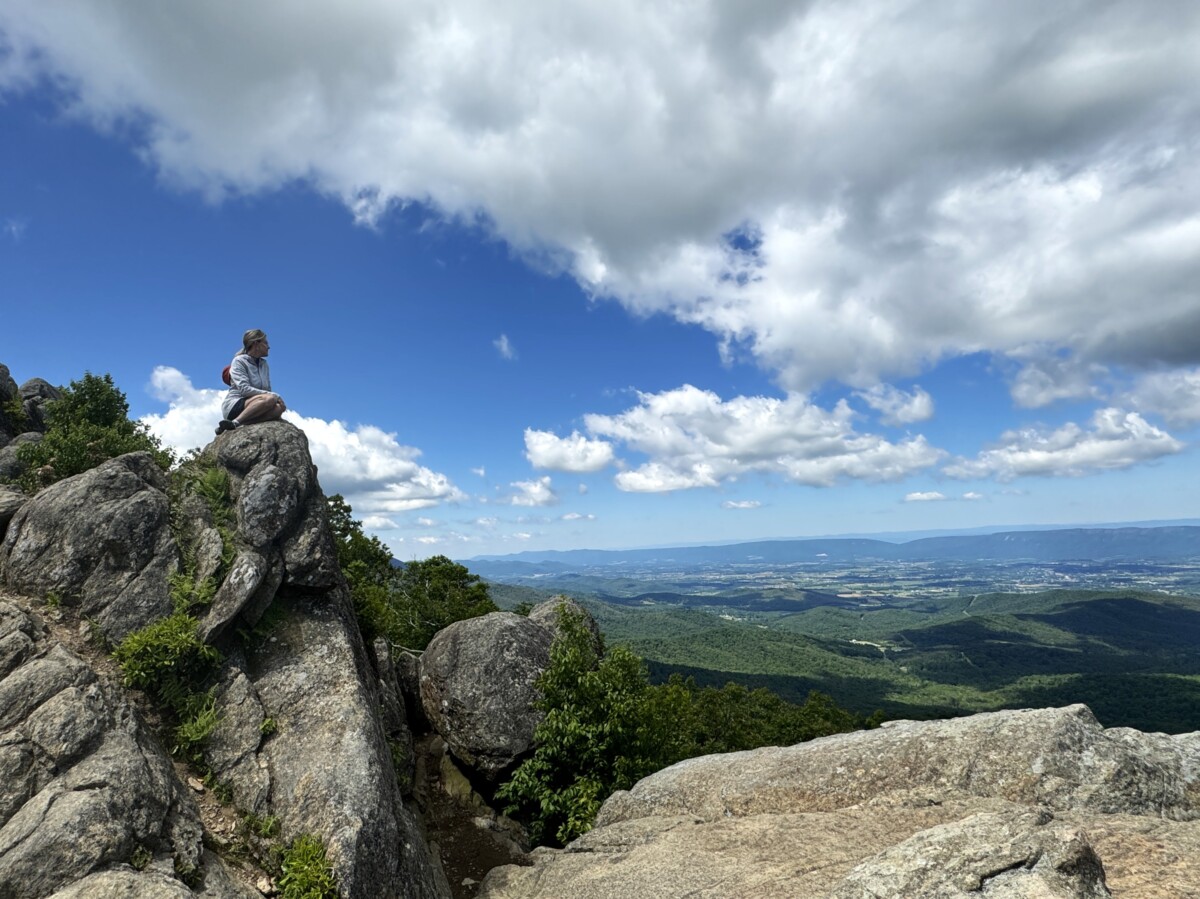

Amazing trees and scenery!!!!! Wow you guys find the coolest places on earth!
The width of those trees blew our minds, Connie! Wish you were here with us, as I know you would appreciate everything so much too!! XOXO
Hahaha!!!! Oh, I’m so sorry, I shouldn’t laugh…but poor Philip trapped in the bathroom, and then that excellent bungee cord fix! Bungee cords and duct tape have saved us many times. I loved this post. Your wonderful photos of the massive trees and Philip on the rock. The mental image of Philip farting a rainbow, LOL. The next time we see you I’ll tell you the story of hundreds of ladybugs setting up camp in our home refrigerator in Oregon—for a year.
I know that Sequoia National Park sign is probably not politically correct, but it’s so cool! You guys are obviously having a blast and I am jealous. ❤️
Lucky you